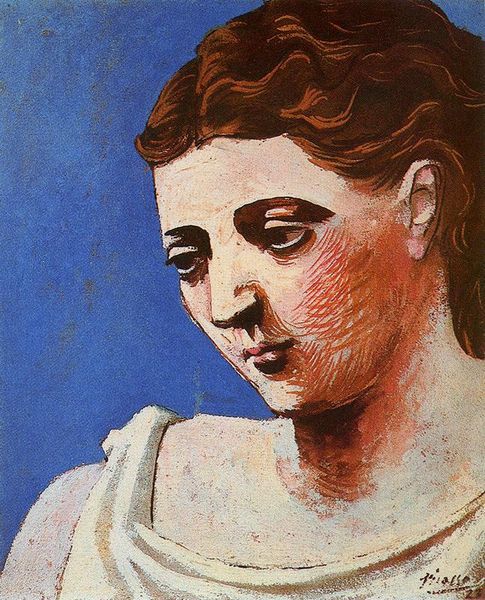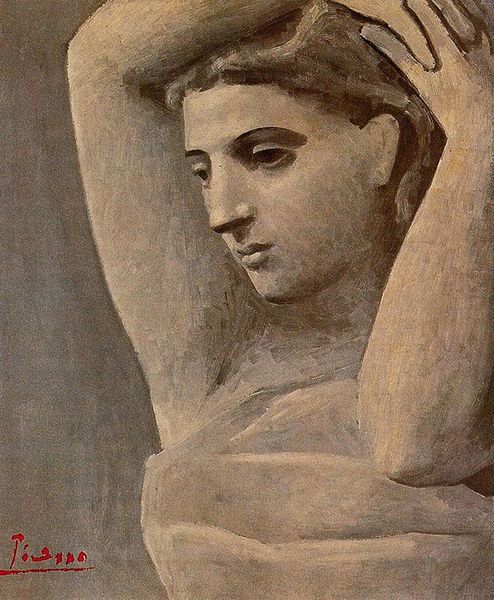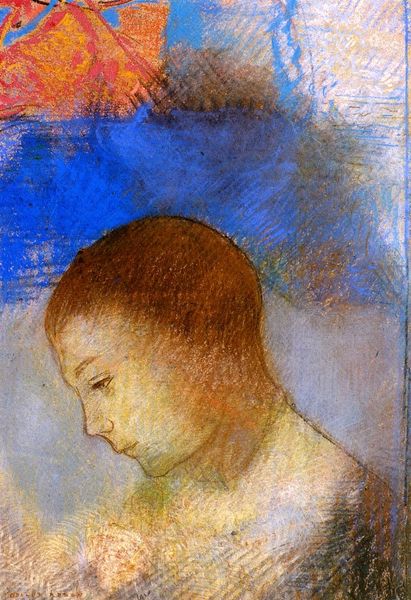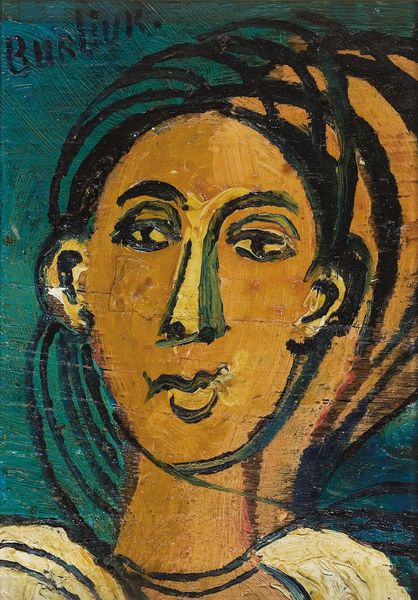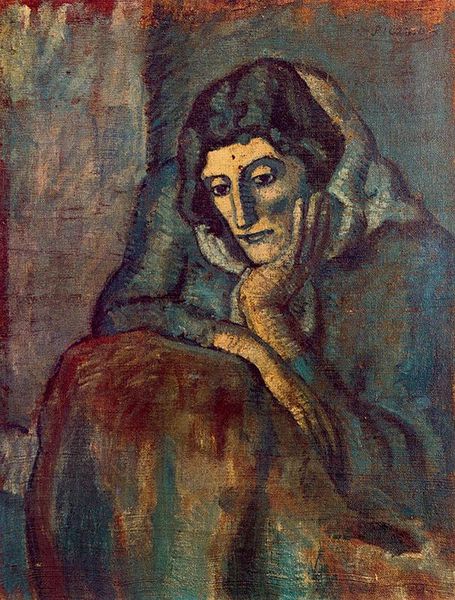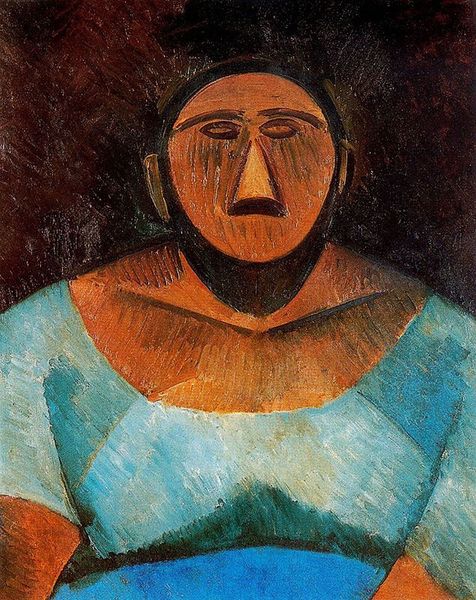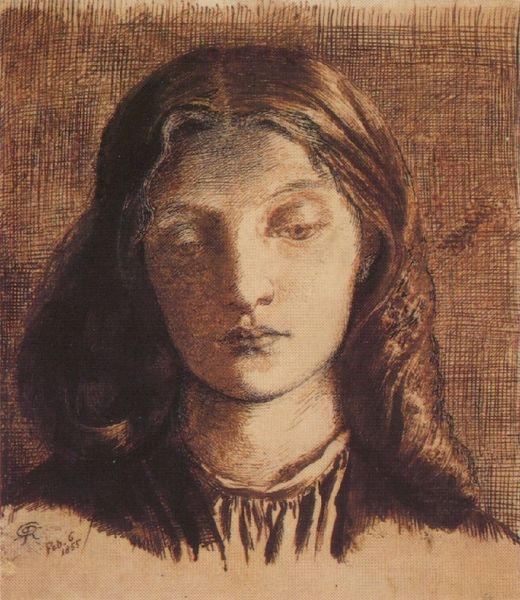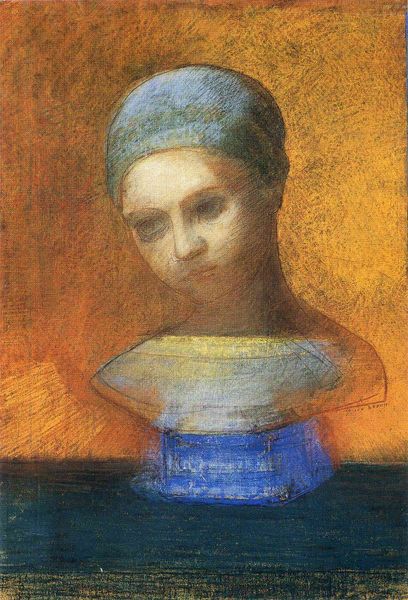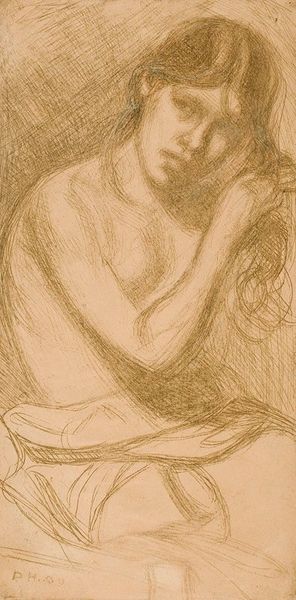
drawing, pastel
#
portrait
#
drawing
#
cubism
#
figuration
#
geometric
#
pastel
#
modernism
Dimensions: 62 x 46 cm
Copyright: Public domain US
Curator: Here we have Picasso's "Head of a Woman" from 1921, a pastel drawing embodying elements of Cubism. Editor: The first thing that strikes me is the contrast of warm hues on her face and the cool blues in the background and her dress; there’s an unexpected tension. The geometric quality certainly draws the eye. Curator: Absolutely, you can see Picasso grappling with classical forms while embracing a distinctly modern style. His post-war work moved from analytical Cubism towards this neoclassical figuration which was then received with criticism for abandoning avant-gardism. Editor: Looking at the drawing materials, I'm curious about his choice of pastel. It lends such a soft, almost delicate quality to what could have been a very angular portrayal of the sitter. And these hatch marks. Were those common for his work at this time? The labour shows itself so deliberately here, and so contrasts the more machine aesthetic commonly associated with cubism. Curator: The use of pastels, indeed, softens the severity, creating a kind of dialogue between tradition and modernism, making this head of woman into something tender. There’s the broader political context of post-war reconstruction and a need for renewed order after the chaos of WWI. Editor: True, but look closely at how these materials—paper, pastel, charcoal—were worked. They are so unassuming yet essential to how the portrait conveys form and weight. A statement of value beyond the portrait. Curator: A solid observation! Picasso's ability to synthesize the traditional with avant-garde concepts, even after critique, shows why he became an institutional cornerstone. It's this complex mix of factors which secured his market value and public presence. Editor: His command of the process reveals more than the techniques though. It makes you think about what these things really mean as symbols of the society around them, where materials become both matter and idea. Curator: It offers an excellent view into art's relation to the modern world. Editor: It is in those gestures that he challenges boundaries of value!
Comments
No comments
Be the first to comment and join the conversation on the ultimate creative platform.
